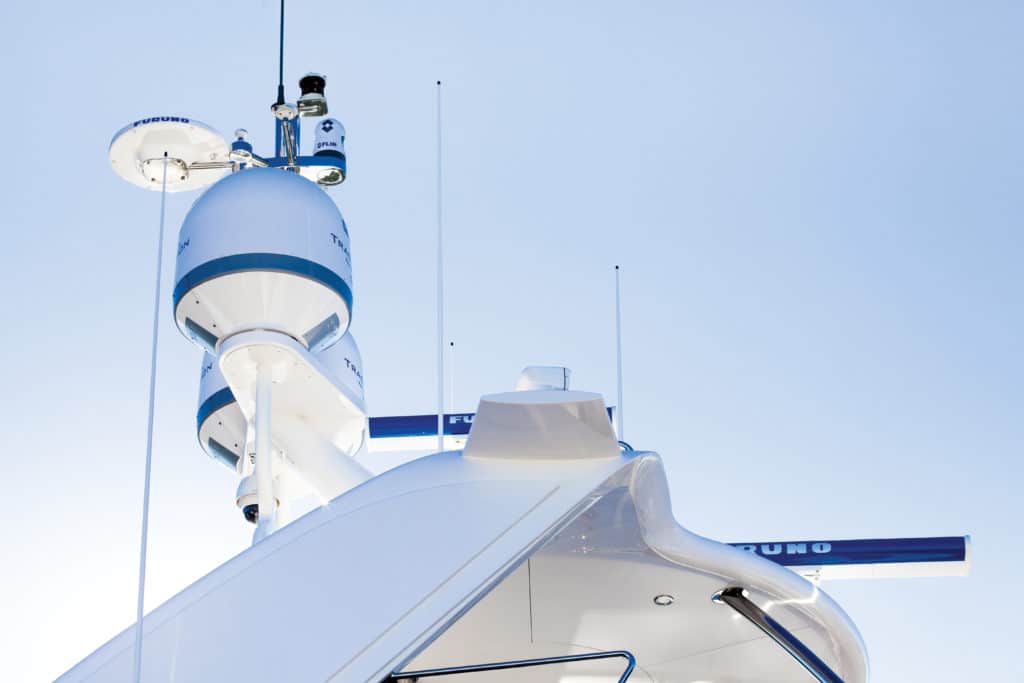
The horizon rolled through almost 25 degrees as Dirona, James and Jennifer Hamilton’s Nordhavn 52, plied the waters off Australia’s eastern seaboard in 2014. Despite the lumpy conditions, James’ job as a vice president and engineer for Amazon Web Services required that he remain online, even as Dirona‘s active stabilization system and autopilot drives labored in the offshore swell.
Luckily, the owners had spec’d a KVH V7 mini-VSAT Broadband satellite-communications system in 2010 — two years before their still-unfurling “one-year” circumnavigation — and a fast data plan that allowed James to take calls and download email and documents, as well as navigational charts and GRIB-formatted weather forecasts.
“I was amazed that the V7 antenna system was able to stay connected,” he says. “It’s impressive [that] it can keep the antenna pointed at a satellite thousands of miles above the equator while the boat is rolling so much that moving around safely requires great care. … The trip simply wouldn’t be possible without satellite communications.”
Today’s satellite-communications systems offer global connectivity, provided that an owner has chosen vessel- and itinerary-appropriate hardware and an airtime-service plan. While sat-comm systems are sometimes complicated, this equipment is rapidly becoming standard aboard larger yachts.
“The first thing [I ask] is always the boat’s size,” says Ryan Smith, KVH Industries’ national sales manager. “For example, on a 70-foot Viking, there are limitations to size of where [an owner] can put [satellite antennas].” On more modest-size yachts, he says, a smaller antenna, such as KVH’s TracPhone V3-IP, using Ku-band frequencies (12 to 18 GHz) to provide coverage on populated continents and across the North Atlantic, could be a practical option. Conversely, a 125-foot Westport could accommodate KVH’s larger TracPhone V7-IP, which also uses Ku-band frequencies. “Ku band covers the majority of our customers,” says Smith, adding that owners venturing beyond Ku-band coverage will want a large-diameter antenna such as KVH’s TracPhone V11-IP, which operates on combinations of C- (4 to 8 GHz) and Ku-band frequencies to provide global coverage outside of Arctic regions.

Connectivity is king, but aesthetics also matter. “A 1.3-meter antenna would look quite ridiculous on a smaller boat, so then you would choose a 60-centimeter [or 80-centimeter] antenna,” says Paul Comyns, Intellian’s vice president of global marketing. These size metrics refer to the diameter of an antenna’s dish, not its dome. In all cases, larger-diameter VSAT antennas offer faster speeds and better signal reception than smaller-diameter dishes. Because most yachts also carry satellite-TV antennas (TVRO), owners typically seek skyline symmetry. “Sometimes we play the eggshell game,” says Jamie Broadbent, KVH’s airtime and value-added services manager. KVH sometimes bundles smaller VSAT antennas in larger domes to create the right above-deck optics.
After vessel size, cruising plans are the next biggest consideration. Like smartphones, VSAT terminals can be purchased with a bundled airtime-service contract, or they can be purchased separately from a hardware manufacturer, and an owner can select a third-party service provider. Hardware manufacturers, including Cobham and Intellian, produce antennas that can be used on a variety of service-provider networks, including Inmarsat, Marlink and Network Innovations. KVH manufactures hardware and leases satellite-transponder space to create its proprietary mini-VSAT Broadband network. This infrastructure, Broadbent says, allows KVH to add or shift bandwidth as needed and provide comprehensive technical support.
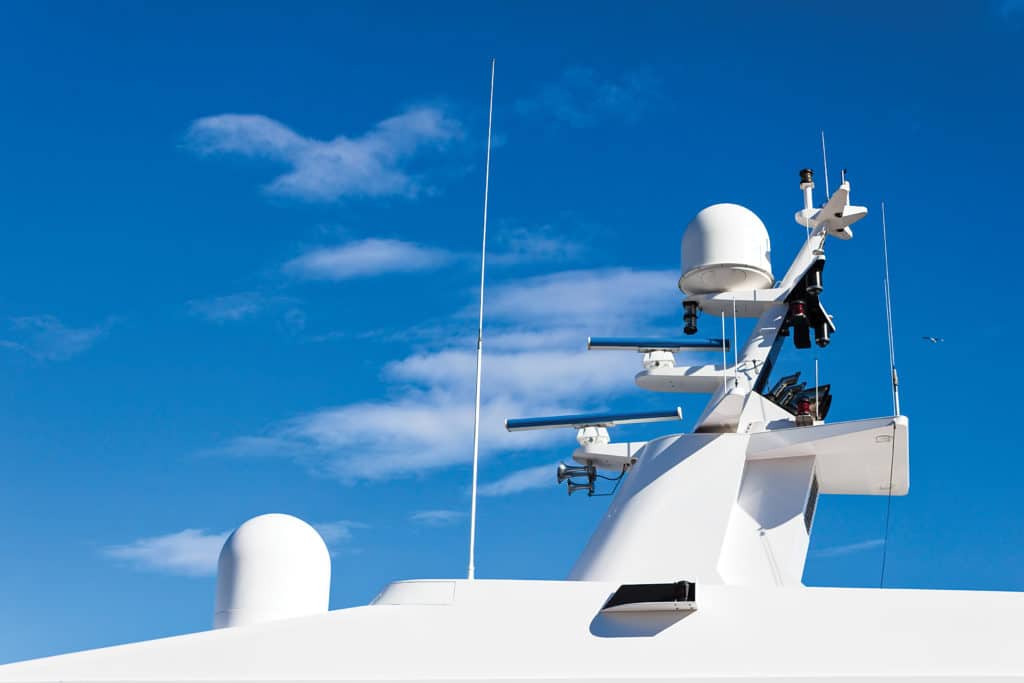
Communication mast on yacht.
While the KVH walled-garden approach to hardware, airtime and tech support ameliorates responsibility concerns, locking in to one airtime-carrier network can be a limitation.
“It’s important that an antenna selection is made such that by changing a modem or a SIM card — in basic terms — an owner can switch between [airtime] providers,” Comyns says. “Say this year your vessel is operating in the Caribbean, the Gulf of Mexico and in U.S. waters, you might get great coverage from a U.S. service provider. But then the next season the vessel goes to the Mediterranean and is cruising the coast of Italy. There are better service providers that can cover Italy.”
Service contracts are typically sold as metered plans or bandwidth-based plans. Metered plans offer quick upload/download speeds, and customers pay for the amount of data consumed. With bandwidth-based plans, users pay a fixed monthly fee for a predetermined bandwidth.
According to Comyns, bandwidth-based plans are great for occasional use but not for Web browsing or social media; conversely, he says, metered plans offer speed but can generate expensive bills (read: movie downloads or content streaming). Moreover, smartphones, tablets, PCs and other IP-enabled devices seek online updates even when their screens are dark, potentially triggering invisible data use unless firewalls or protocols are employed.
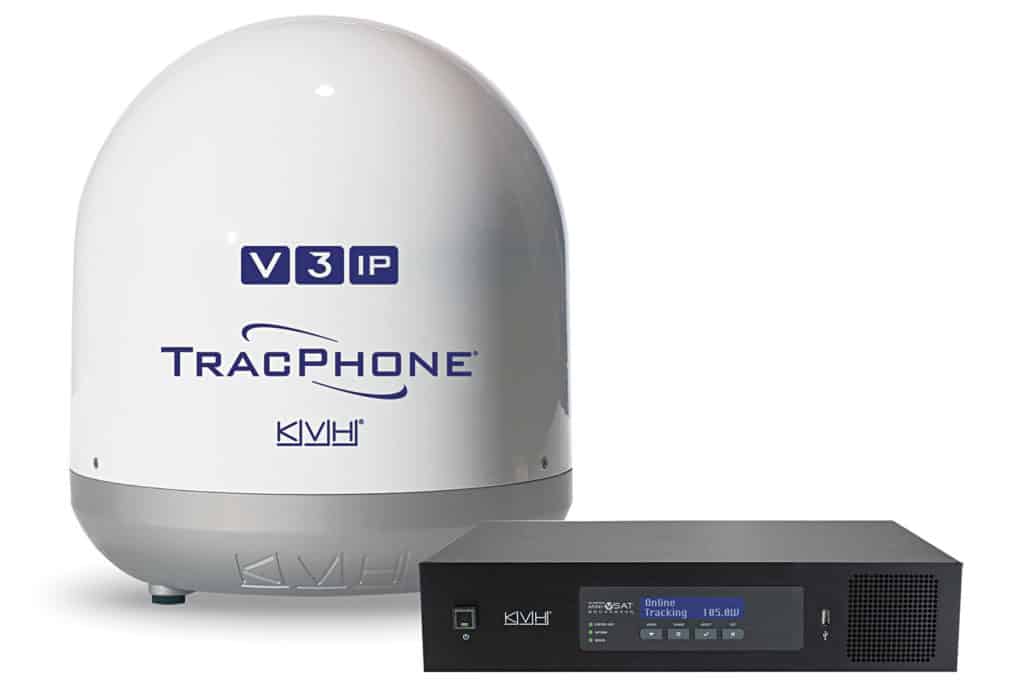
Alternatively, KVH’s mini-VSAT Broadband 2.0 service offers open-rate plans. These function much like cellular plans in which users pay for fast, fixed upload/download speeds and a specific data allotment (e.g., 2,000 megabytes per month) and then pay for data overage, which is less expensive than metered-plan overage fees. For example, a KVH customer with a TracPhone V7-IP and an open-rate plan with 2,000 megabytes per month of data allotment gets upload/download speeds of 512 Kbps/3 Mbps, with overage fees of $0.12 to $0.40 per megabyte (plan depending). A KVH customer with the same antenna and a metered plan enjoys similar speeds but — plan depending — could face overage charges of $1.99 per megabyte.
Regardless, data-use and bandwidth-management strategies are crucial for avoiding wallet-curdling bills. For starters, owners should think of managing their guests’ connectivity expectations much like their expectations for freshwater use: Both are available, but excessive use isn’t seamanlike. Some airtime providers give owners network-management tools for red-lighting certain Web pages (e.g., torrent sites) while green-lighting others. For example, KVH owners can use their My KVH portal to manage their onboard network and administer data and bandwidth allocations. Users can create rule sets that instruct the system to use the cheapest available connectivity option (read: cellular or Wi-Fi), or that allow access to data-intensive websites via cellular or Wi-Fi connections while blacklisting them when connected via VSAT. “If [a customer] isn’t talking about how to manage the network, [they] are setting [themselves] up for disappointment,” Smith says.
Additionally, some airtime carriers allow owners to slow down, darken or winterize their networks. “Owners want high-speed service when they are on board and low-speed service when it’s just the crew,” Comyns says.
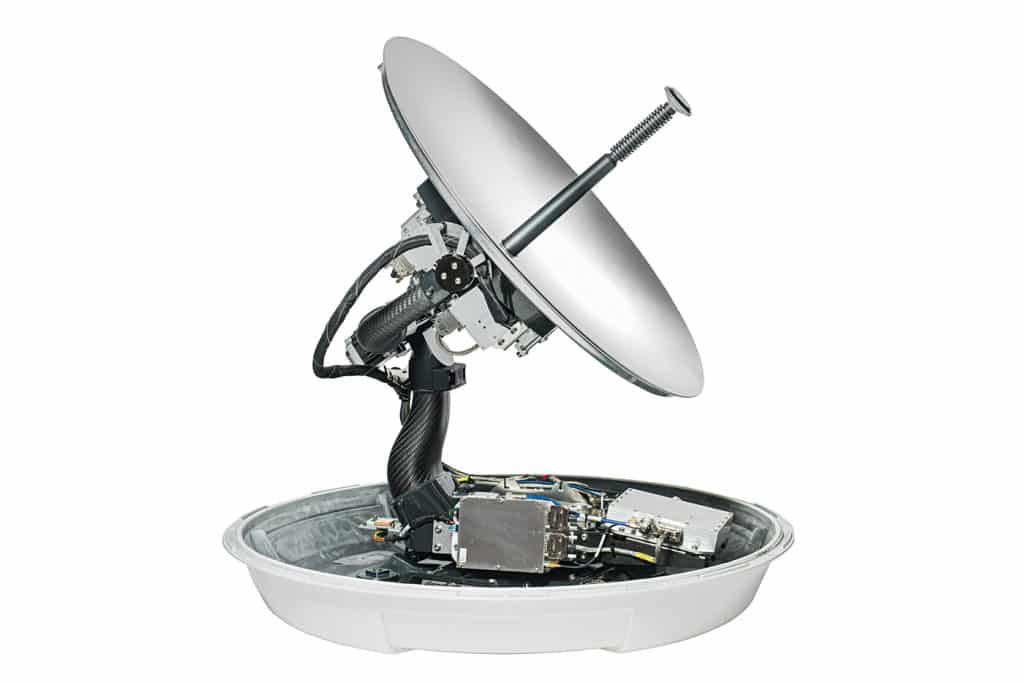
Moving forward, boaters can expect their onboard data needs to grow as more systems, engines and electronics are IP-enabled, and as technologies such as telemedicine evolve. “Just like ashore, [mariners] are expecting always-on connectivity, increasingly higher bandwidths and the highest levels of reliability,” says Jens Ewerling, Cobham’s director of maritime broadband.
Here, however, mitigating tomorrow’s needs isn’t as simple as fitting additional freshwater tanks. “Future-proofing depends again on where the boat operates,” Ewerling says. “Ku-band [antennas are] a safe bet, as most new high-throughput satellites coming online over the next five years will be using frequencies in the Ku-band range. The larger an antenna the vessel can accommodate, the higher the bandwidth and throughput the boat would be able to subscribe to.”
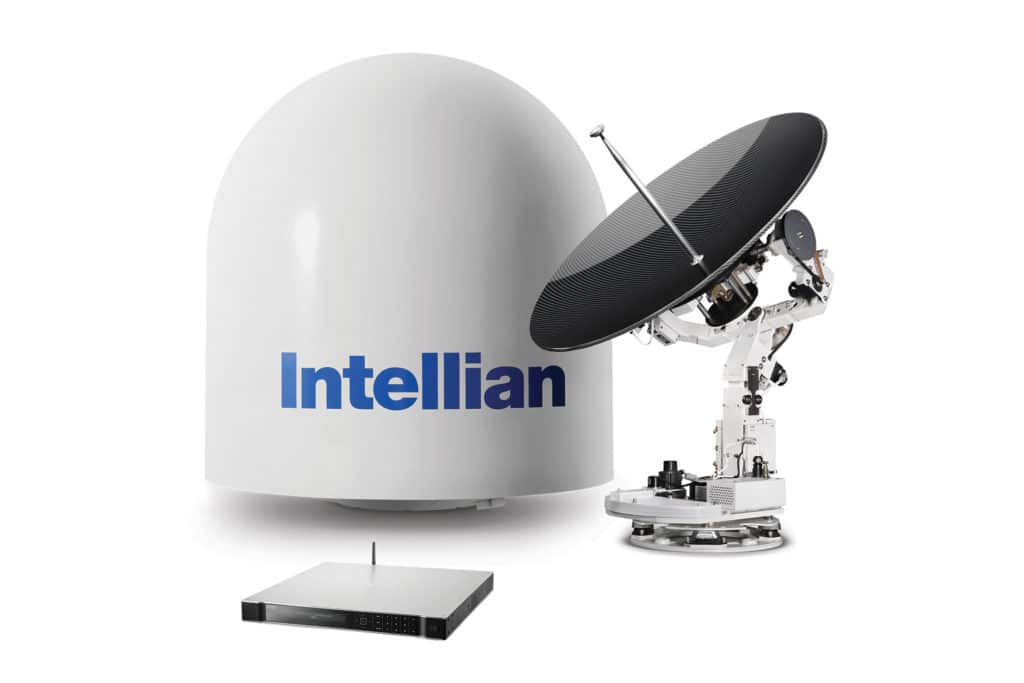
Finally, technology isn’t static, and many owners upgrade yachts within a five-year window. “As demands increase, we will have to keep up with service and technology,” Smith says. “The product that we launch in five or 10 years will be different [than today’s offerings].”
Because of this last consideration, owners are advised to buy a VSAT system that best fits their current yacht and ownership horizons, and to use it extensively. But, just as no good mariner leaves a galley faucet running, owners need to manage their network and their guests’ expectations to ensure onboard tranquility and reasonable bills.
DOUBLING DOWN ON DOMES
Yachts cruise with two identical domes to house their VSAT and TVRO antennas, which rely on line-of-sight communications that can get blocked, especially at higher latitudes where antennas operate at lower elevation angles. To compensate, some owners spec two networked VSAT domes and dual-networked TVRO antennas. “Jumping up to the larger yachts, you’ll often see four antennas, where they will have them connected to a [belowdecks] mediator [device] that switches between one [antenna] or the other,” Comyns says. “This makes [the system] more efficient and reliable, as you don’t lose the signal.” This option ensures reception, especially when berthed near large yachts and tall buildings or while executing turns. Aesthetically speaking, doubling down on your satellite-communications domes can also add a symmetrical skyline to your vessel.









